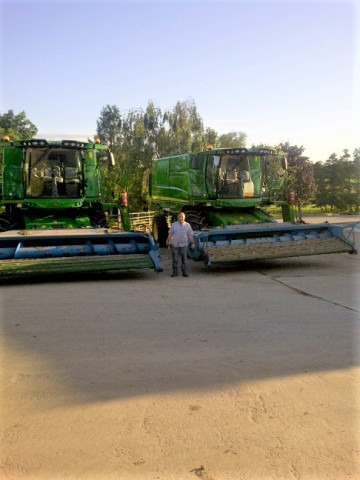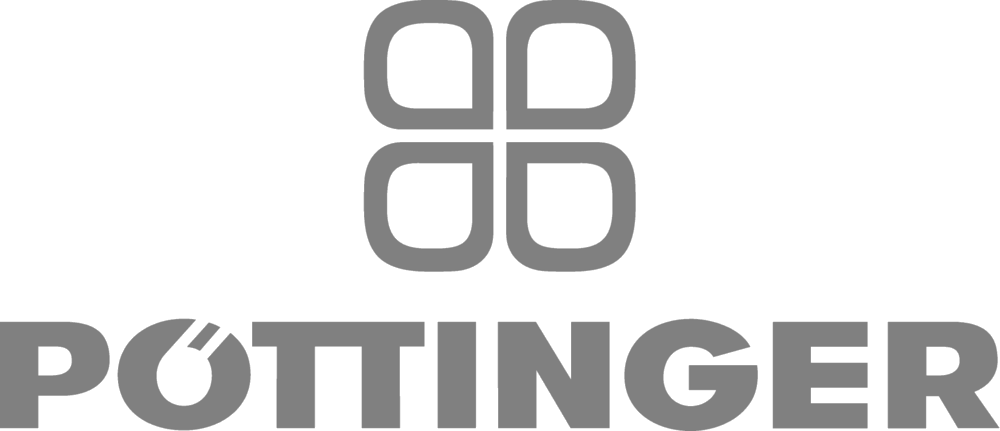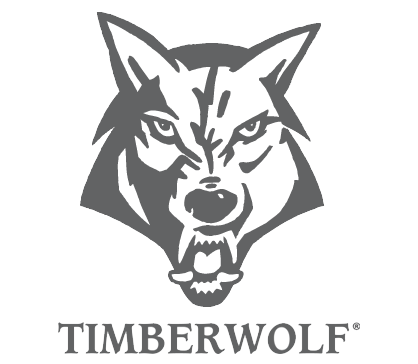Buying two new smaller combines, instead of one large combine, has been the policy for Herefordshire farmer Mark Bennion and it’s paying off every time! Every four years, they change out their two John Deere T550 combines and replace them with brand new models and because the operating hours are so low, the trade-in values make it a very sensible option. But also, there are other benefits to consider!
Mark, his wife Annie and their son George, farm 1600 acres at Rose-Hill Farm near Ledbury. Their cropping plan includes 500 acres of winter wheat, 320 acres of herbage seeds and 100 acres of cider apples, together with 120 acres of sugar beet and 350 acres of maize for their 1.2 MW AD Plant. In addition, they also carry out agricultural contracting for their neighbours, mainly for combinable crops.
Commented Mark Bennion, “With such a large acreage of high-value herbage seeds, timeliness of harvesting is paramount. Our grass crops will need harvesting before we get into the wheat, and it’s much easier to gain high capacity output in the herbage seeds with two combines, each with twenty-two-foot headers, instead of one large combine. There’s also the fact that in Herefordshire, we have lots of narrow lanes and, moving a large combine can be impractical. The real benefits are down to the output that harvesting over forty foot at a time with two combines, means we can be a lot more efficient. But it’s not just down to harvesting capacity where we score. The used value of a smaller John Deere combine - like the T550 is comparably much greater as a percentage of the original cost, due in part to there being a greater demand for smaller used combines.”
Since the 1980s, the Bennions have acquired their John Deere combines from Tallis Amos Group (TAG) in Leominster and purchased T550 in 2012, again in 2016 and this year - the 2020 models came full AutoTrac ready and installed with JDLink. “Simon Amos at TAG has given us some great deals for our trade-ins,” added Mark, “we don’t get more than about one hundred fifty hours on them each season and so they are really underused and therefore attract a better-used value. The maths between the cost of one large combine versus two smaller combines becomes sensible when you look at their value after four years. When you compare with the initial outlay - I think it’s a pretty good deal really!”
With JDLink being part of the package, last year, Mark Bennion’s main combine operator, David Fleetwood, won the top combine performer for the entire TAG territory. That means he set-up the combine to its most efficient, used the least fuel per acre, had the least crop losses and the best output performance. Each machine’s performance was recorded and evaluated by TAG via JDLink to compare how and where the most savings can be made. “If you compare the total output of these two machines,” commented Mark, “you will see that they will outperform a much larger machine. Therefore, we can cover our acreage a lot quicker, when the combining conditions are at their best. Having two machines, also means we can better serve our contracting customers, because we can attend two customers at once. That is a big benefit, especially when the crop is ready for harvest and the weather conditions are not looking so good.
TAG have given us great back-up service and support and we have not experienced any major breakdowns from any of our John Deere combines, they’ve performed really well. For us, the package we get from TAG and John Deere, suits us perfectly, gives us the best return on our investment and makes life a whole lot easier.”































